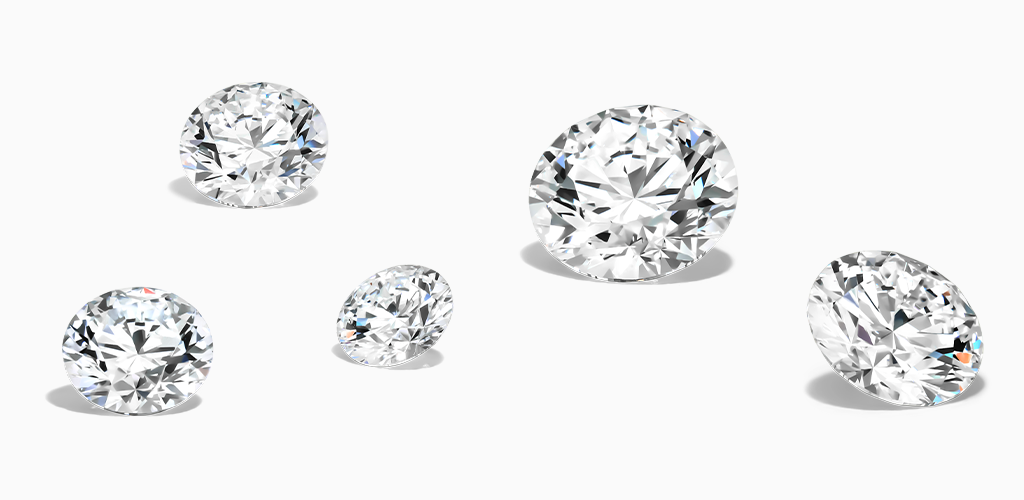
Have you heard of the 4Cs? Wondering what they are? Let’s break it down!
A diamond’s quality is determined by the 4Cs:
Diamonds come in a variety of colors, shapes, sizes, and styles.
Because of their individuality, the Gemology Institution of America developed a grading system that enables the evaluation and weighing of diamond characteristics. A diamond’s scores directly alters both its cost and shine- that’s why the 4Cs are so important!
Let’s go more in-depth into what the 4Cs represent…
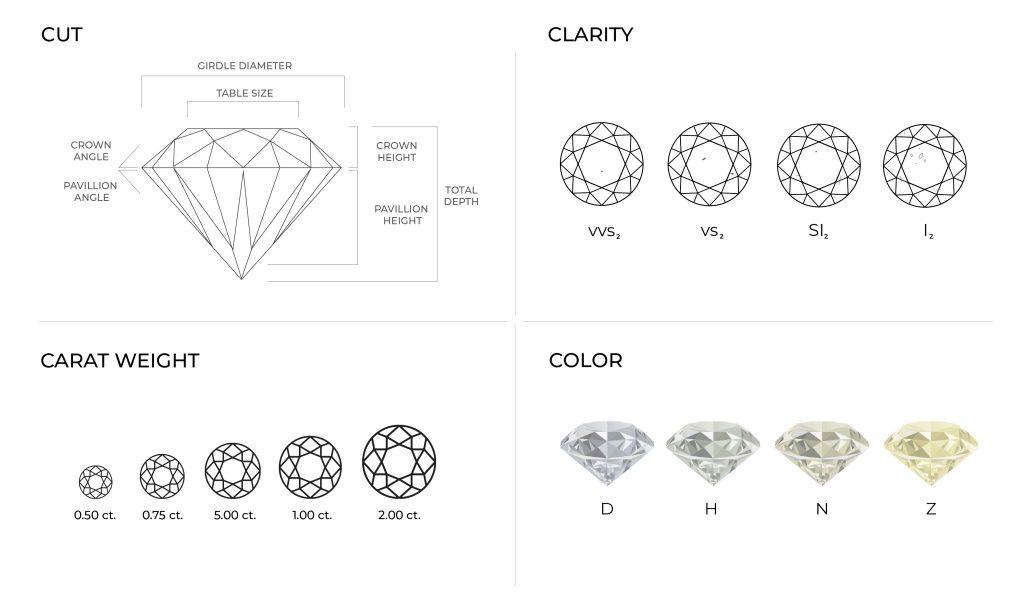
Cut
We often associate a diamond’s cut only with its shape, whether it be a heart, pear, or oval. But, really, a diamond’s cut is far more complicated than that. Evaluating a diamond’s Cut is all about observing how well it interacts with light.
A lapidary (a person who cuts diamonds and gems) needs to employ incredible precision and artistry to make a diamond as bright as possible. The diamond’s proportions, facets, symmetry, and polish all have a role in its return to light.
Because of this, Cut is the hardest of the 4Cs to evaluate.
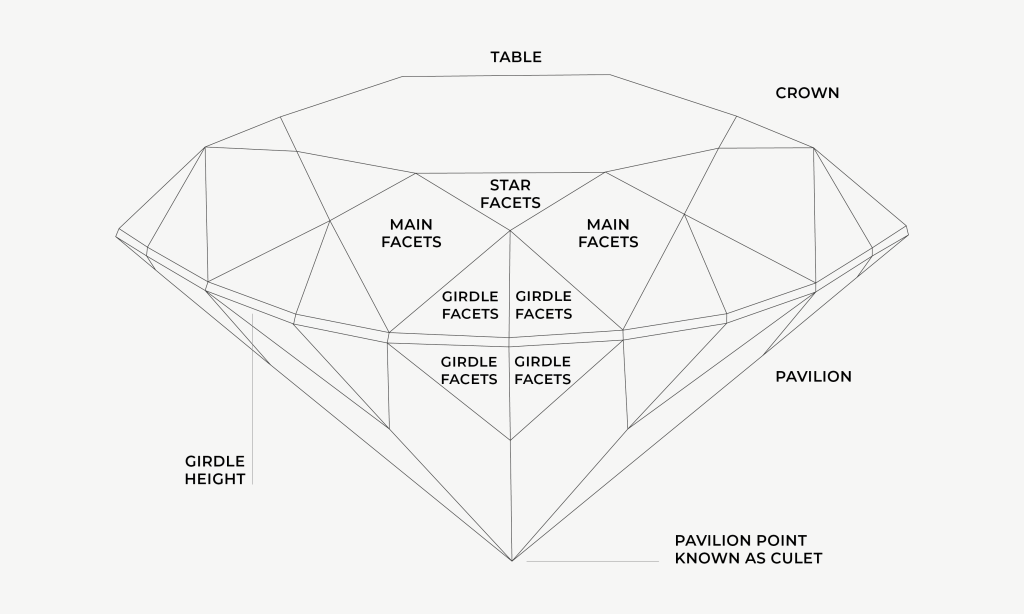
Color
Despite the name, when one is grading a diamond’s color, they are actually looking for the absence of color. The perfect diamond will ideally have no hue whatsoever- almost like a drop of water. The clearer the diamond, the higher the value.
The GIA developed a color grading scale that is now widely accepted throughout the industry. The highest-value diamond will have a D, meaning colorless, and the lowest-value diamond will have a Z, meaning full of color.
The color of a diamond is carefully measured using controlled light and comparison tools.
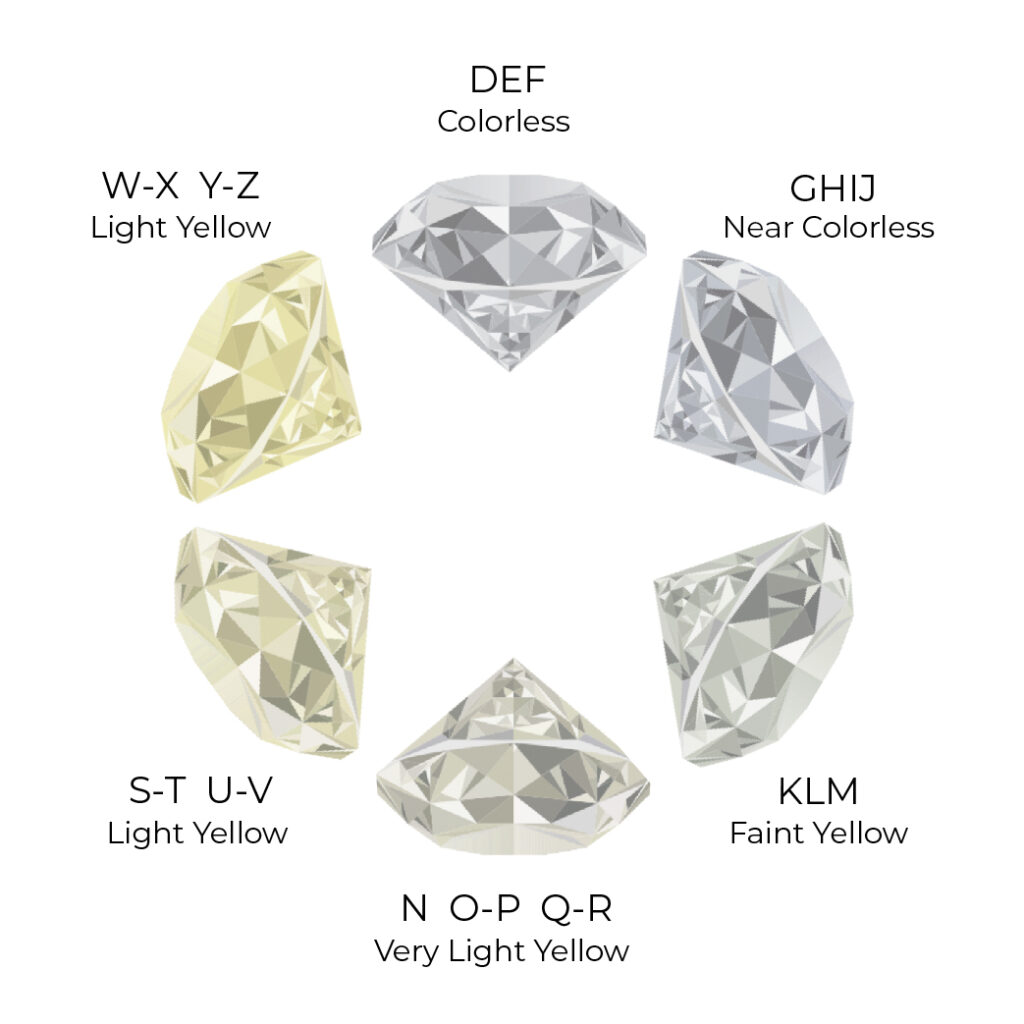
Clarity
We tend to forget that diamonds are actually the result of an intricate geological process. This process may certainly leave diamonds with inclusions and blemishes.
A diamond’s quality is determined by noting the number, size, placement, and type of such blemishes. The fewer the blemishes, the higher the value!
A diamond’s clarity is evaluated using a specific rating system:
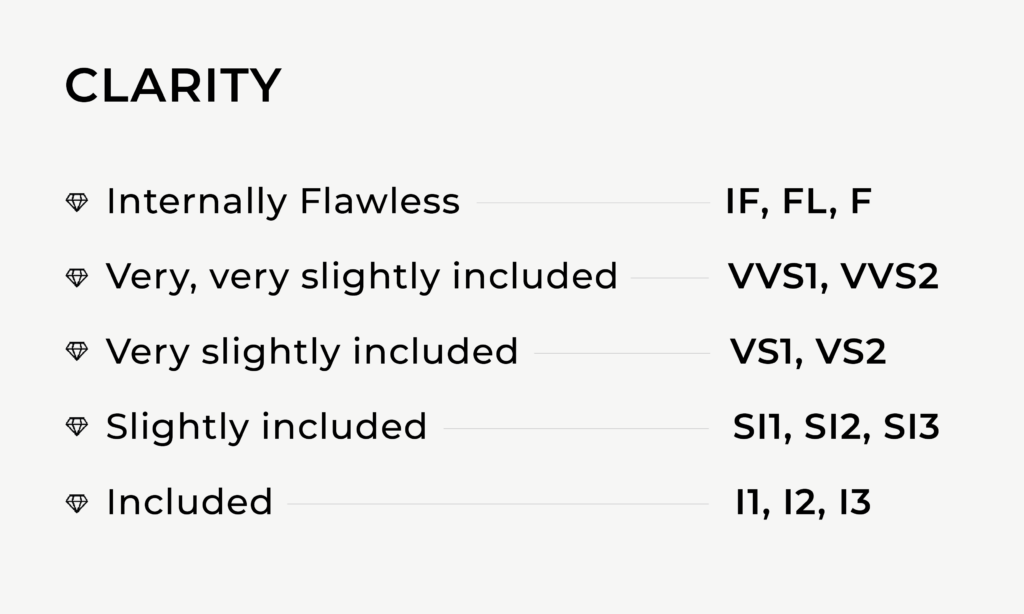
Carat
A diamond’s carat weight is measured by how much it weighs. 1 carat is 200 milligrams. Large diamonds are incredibly rare and highly sought after. The heavier the diamond, the higher the price.
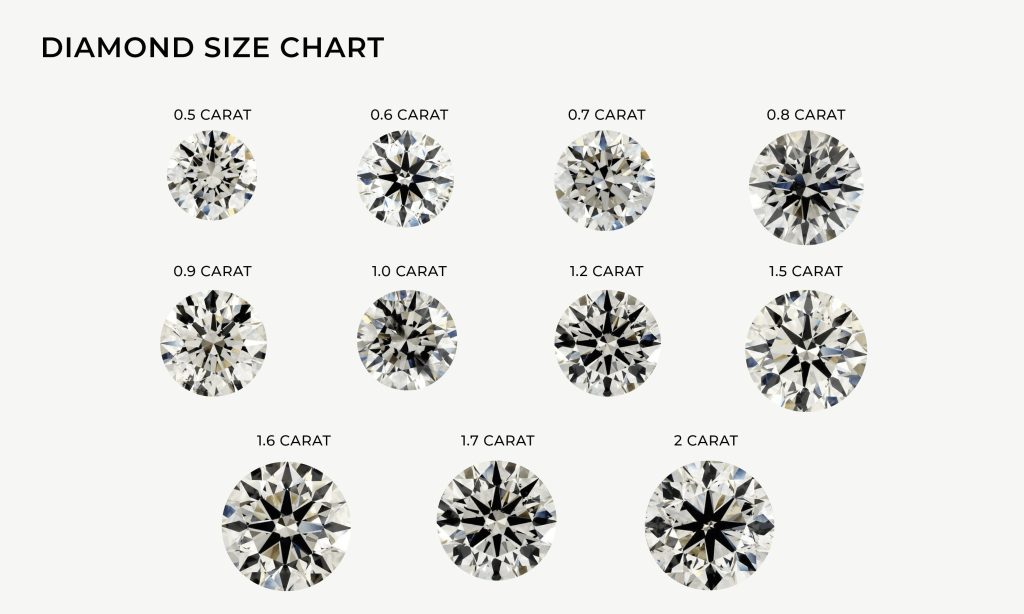
Keep in mind that two diamonds of equal carat weight can have very different values (and prices) depending on three other factors within the 4Cs: Clarity, Color, and Cut. It’s important to remember that a diamond’s value is determined using all of the 4Cs, not just carat weight.
Remember that the 4Cs are a guideline, not a straightforward good-or-bad scale. Keep this in mind when using the 4Cs as you shop for your engagement ring!
Once you fully understand the 4Cs, you can figure out which aspects to prioritize so you find the perfect ring within your budget!
Cut doesn’t just mean looking at a diamond’s shape and polish. Cut is directly related to the shine of the diamond, as well. Take a look at how the diamond reflects light; in an ideal diamond, there should literally be sparkles! When you find a diamond that shines brilliantly, make sure you are also happy with its shape. In addition to its light and shine, ask if it is appealing to you.
An absolutely colorless diamond is extremely rare and shouldn’t necessarily be your top priority. Remember that even G-I rated diamonds have no discernible color and have great value for their quality.
K rated diamonds are a budget-friendly option. Even though these diamonds may be faintly colored, they pair nicely with yellow gold metals. Keep in mind that there is always a way to make a less expensive diamond look gorgeous.
No diamond is perfect. Under the naked eye, a stone may appear free of blemishes and inclusions- but upon further inspection that may not be the case. When shopping for your engagement ring it is important to have a professional evaluate it. Getting a professional opinion will ensure that you get your money’s worth!
Now that we know that value is directly tied to weight, it can be easy to get caught up in the carat of your diamond. But it’s important to remember that while carat is meaningful, the value of your diamond comes from all its Cs.
Two diamonds of the same carat weight may have completely different values! When choosing a diamond for your engagement ring, look at the piece as a whole, not simply for its weight. Take all factors into consideration, and you’ll make the perfect choice!
Conflict free or ethical diamonds are any diamonds that were produced under ethical conditions. This can mean several things: the diamonds did not finance civil wars, they were mined and shipped under safe working conditions, miners were paid fair wages, and there were no human rights abuses during the production of the diamonds.
If you want to guarantee that your diamond is 100% conflict free, purchase a lab grown diamond. Lab-grown diamonds have no discernible differences from earth-grown diamonds and are friendlier on the pocket.
James Allen understands that shopping for the perfect diamond can be overwhelming! If you’re still unsure about the 4Cs, take advantage of our free diamond consultation and inspection services. We’re here to help make the diamond shopping process as smooth as possible!
Experts say that Cut is the most important of the 4Cs. This is because when a diamond is poorly cut, no amount of clarity, color, or carat can make up for it. When well cut, it can present its other qualities in full force.
Remember, the most important of the 4Cs is Cut. This is followed by Color, Clarity, and Carat Weight. Keep this order in mind when deciding on what you want to prioritize!